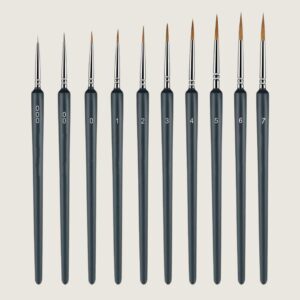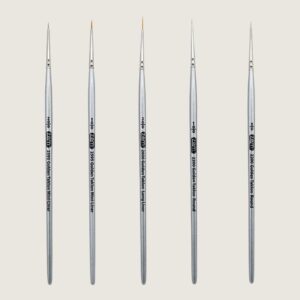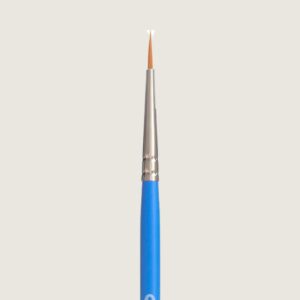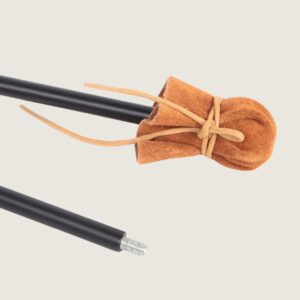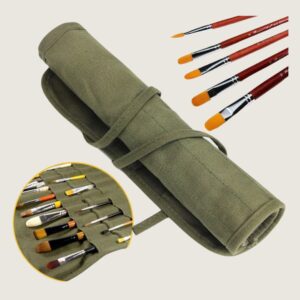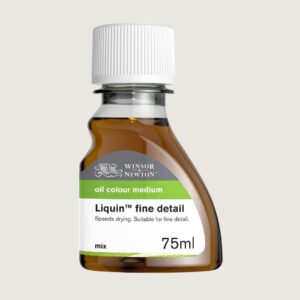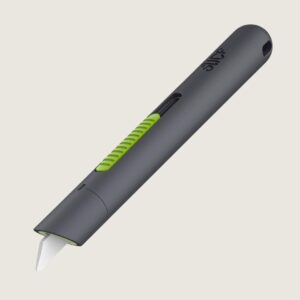8 Best paintbrushes for painting fine details
Learn My Craft | 23rd October 2021
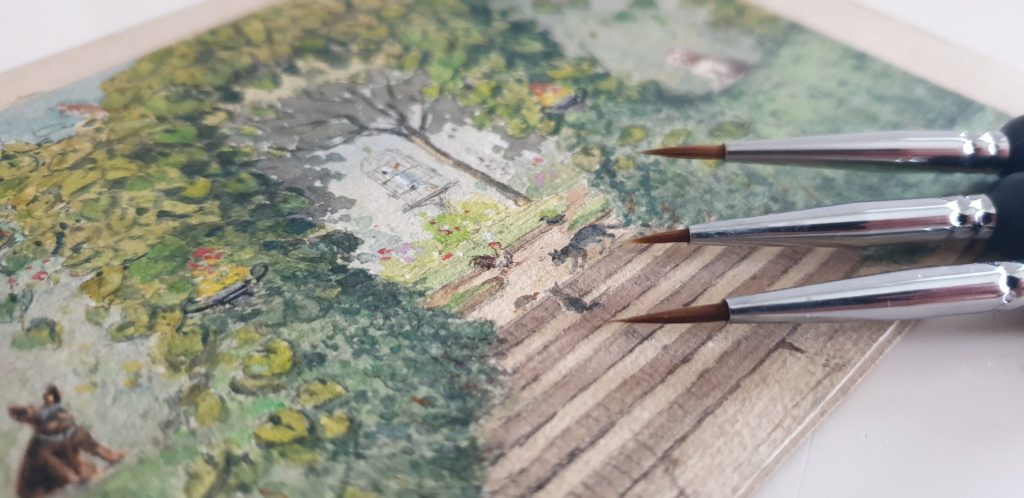
Painting fine detail is a rewarding skill that can transform your artwork from mediocre to extraordinary. If you are an artist that regularly paints tiny, fine details in any medium from watercolour to oils and acrylics, you will know the importance of using the right brushes. If you want to create crisp detailing and precision strokes then having the right equipment is essential. Many types of art require the use of fine detail to create a realistic or highly intricate effect.
To build out your full set of fine detail brushes, including a range of brush types from round to filbert to liners and spot detailers. These brushes are suitable for beginners and experienced painters.
- Round
- Angled
- Filbert
- Liners
- Spot Detailers
When shopping for the perfect set of detail brushes, you will notice a wide range of price points. Brushes start at just a few dollars, but can quickly reach hundreds of dollars for a single brush. The reason for this is usually to do with the quality of the bristles you are buying.
The highest quality brushes use natural hair fibers such as Sable (a type of weasel found in Siberia), which are famous for their ability to take on paint and deliver it evenly and with great precision. At the entry-level end of the market, you will find brushes made from synthetic hair or a combination of natural and synthetic bristles.
Synthetic fibers aim to replicate the properties of a natural hair brush but at a fraction of the cost. They can sometimes be easier to look after and more durable and are cheaper to replace at the end of their life. However, some synthetic brushes sometimes don’t perform as well as natural brushes.
What size fine detail paintbrush should you use?
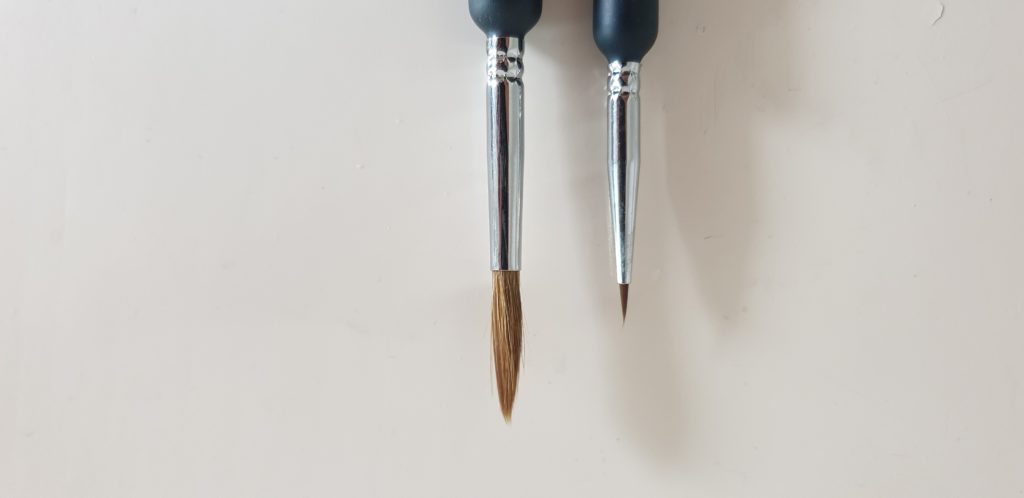
Artist paint brushes are given numbered sizes. From smallest to largest, the sizes are: 20/0, 12/0, 10/0, 7/0, 6/0, 5/0, 4/0 (also written 0000), 000, 00, 0, 1, 2, 3, 4, 5, 6, 7, 8, 9, 10, 11, 12, 13, 14, 16, 18, 20, 22, 24, 25, 26, 28, 30. The most common sizes for paint brushes are between 000 to 20.
Brushes used for fine detail are typically size 2 to size 20/0.
Sets of fine detail paintbrushes
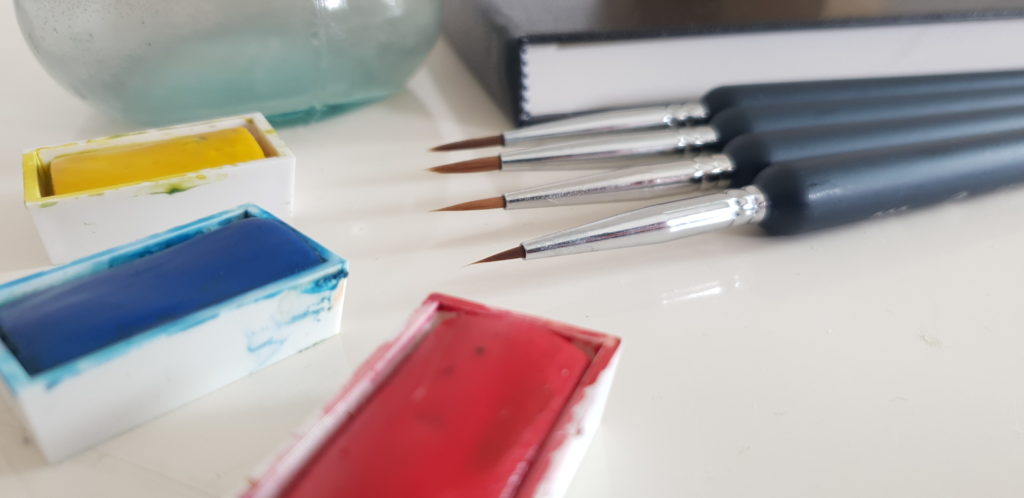
Morkia Detail Paintbrush:
Brand: Morkia
Features: Set of 10 detail brushes
Size: from 3/0 to 7
Amazon Reviews: 4.3 out of 5 stars
Pros:
- Good range of sizes
- Durable, multi purpose bristles
Cons
- Some artists might need even smaller brushes for very fine precision work.
Foxwood Miniature Fine Detail Paintbrushes:
Brand: Foxwood Art Supplies
Features: Set of 15 precision brushes
Size: Liners (sizes 4/0, 3/0, 2/0, 0, 1)
Round (sizes 4/0, 3/0, 2/0, 0, 1)
Flat (sizes 1, 2)
Spotter (sizes 0, 1)
Angular (size 1)
Amazon Reviews: 4.8 out of 5 stars
Pros:
- High precision tips
- Ergonomic handles
- Easy to clean
Cons
- Some artists might need even smaller brushes for very fine precision work.
Most artists will start out by buying a set of detail brushes, like this one by Foxwood Art Supplies. The benefit of buying a set is that you can try a whole range of brushes of all different sizes and shapes. Most sets are also very good value, just be sure to double check the reviews for quality before buying. This set includes the full range of brush types, including an innovative angled brush for getting tricky spots.
If you are looking for a set of fine detail brushes for model making or painting miniatures, this set is a great place to start. It will give you the versatility you need, and the brushes are suitable for use with all types of paint.
Micro detail brushes for fine detail
There are small brushes and there are micro detail brushes. Use micro detail brushes for the smallest, most precise painting jobs. Micro detail brushes come in sizes 5/0, 10/0 and even 20/0.
ZEM Brush Golden Taklon Mini Fine Detail Paintbrush Set
Brand: Zem
Features: Set of 5 synthetic micro detail brushes
Size: Liner 20/0, Mini Liners 20/0, 10/0, Details 10/0, 5/0
Amazon Reviews: 4.7 out of 5 stars
Pros:
- Very small brush sizes
- Excellent quality
- Medium Firmness
Cons:
- Can be difficult to maintain the bristles over time.
Single paintbrushes for fine detail
Some artists prefer to buy one or two quality brushes for fine detail work. This will allow you to have more control over the brushes you chose.
The single brush range from Princeton Artist Brush Co are ideal for tiny details, spot work (think light reflections on the eye etc) and minute details. The brushes use synthetic bristles, and the handle is ergonomically designed for maximum stability during use. (This is also the best-selling brush that Princeton make!)
Using a Mahl stick for fine detail painting
A mahl stick (sometimes called a maul stick) is a stick-like tool used to provide a hand rest to the artist while they paint detailed and precise lines. Mahl sticks have been used by artists for centuries. If you paint on canvas or board, particularly at a large scale, a good mahl stick can steady your hand and give you something to lean on. They are particularly useful for long painting sessions when you start to get tired.
Try this Mahl Stick from Amazon.
If you work on paper or on the flat, and need to create fine details without smudging your work, try an artists bridge.
How to use fine-detail paintbrushes
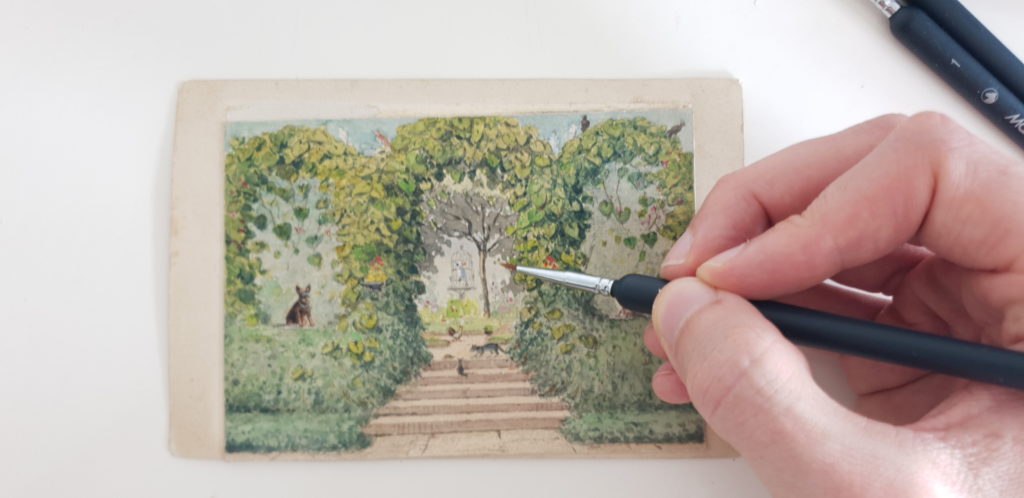
Detail work is unique in that it requires a high degree of concentration, focus and stability to do well. Work in a well lit, well ventilated area.
Wherever possible bring the work closer to your face, rather than hunching over your work.
It can be helpful to take breaks every 30 minutes and to keep your posture as relaxed and neutral as possible.
Hold the brush comfortably, resisting the temptation to grip too tightly. Apply the paint with a steady hand (use a painters mahl stick if needed). The harder you press the thicker the paint will be applied.
How to clean fine-detail paintbrushes
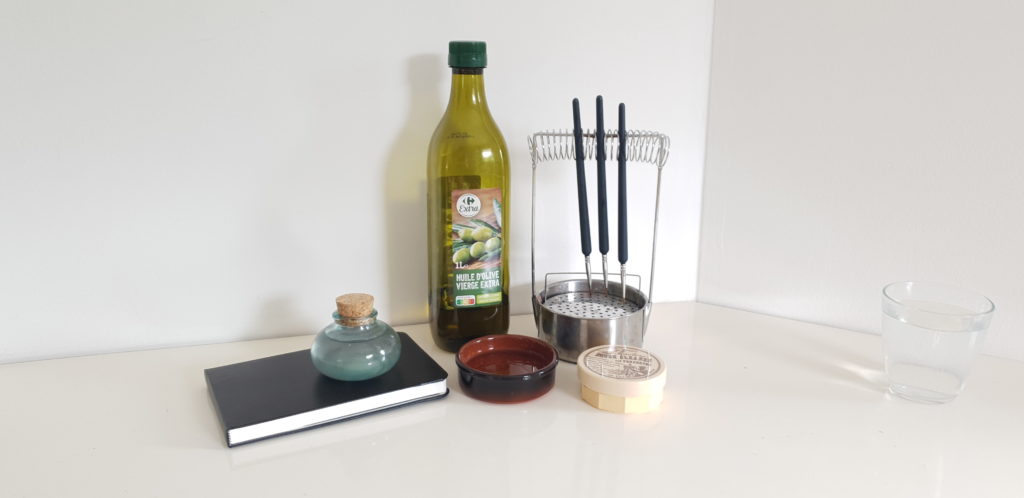
Most people don’t realise that to create fine details and sharp, focused brush strokes you not only need the right brushes, you also need to look after them carefully. When you take the time to care for your paint brushes properly they will not only last longer but they will retain a sharp tip; essential for creating those fine lines and details.
Top Tip! Never use hot water to clean your brushes, it can melt the glue used to secure the bristles, leading to bristle loss next time you paint!
First things first, never let paint dry onto a very fine brush – it makes cleaning them must more difficult and you will quickly find yourself having to buy new brushes.
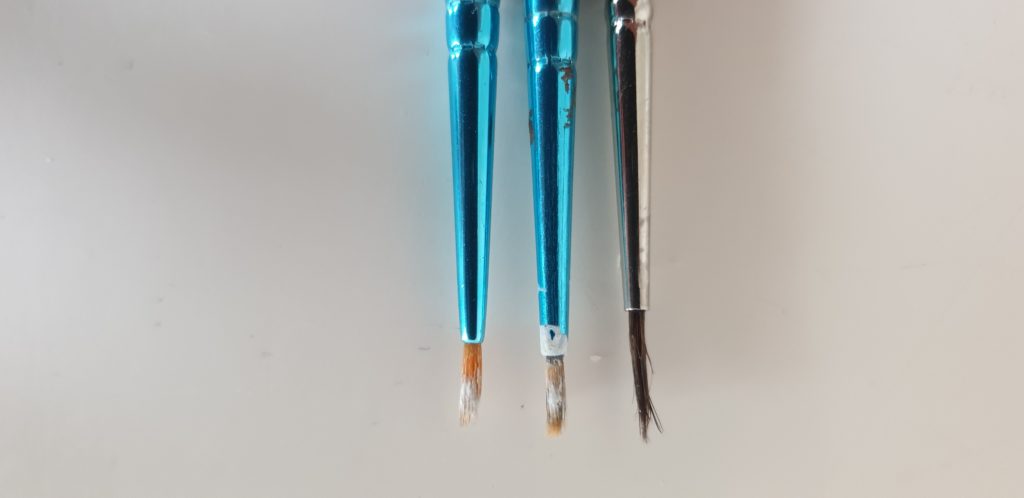
There are a number of products that make it easier to care for your detail brushes.
This multipurpose brush cleaner and preserver can be used to clean oil ,acrylic and watercolor paint from your brushes. To use it is simple, rinse your brush in warm water, swirl the brush in the soap like compound until it creates a lather and rinse. The pot has a screw top and lasts ages!
Dry your brushes using a paintbrush cleaning system like this one from Mylife Unit. Made from stainless steel, the unit allows you to suspend your brushes to drip dry without damaging the fine bristles. Its safe to use with water and all oils and solvents.
Always store your brushes bristle side up, and reshape the bristle head into a fine point before putting the brushes away. This will extend their life.
Olive oil makes an effective brush cleaner for stubborn oil based paint. Soak your brushes in olive oil for 20 minutes and rinse off.
For acrylic paint, soak your brushes in a small tub of warm white vinegar and rinse.
Oil painting medium for use on fine detail painting
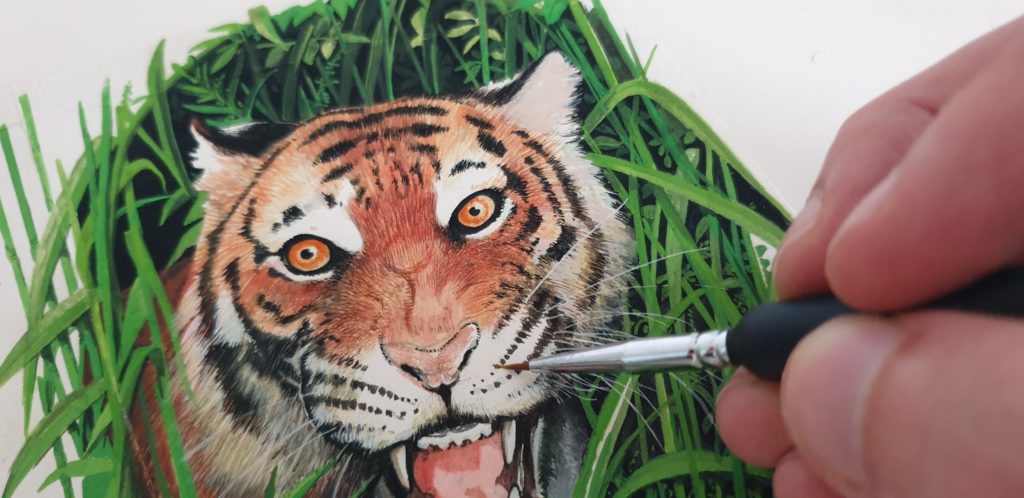
When using oil based paints for fine, detailed work you might find it helpful to add a medium to the paint. The addition of the correct medium will help your paint to dry faster and apply in smooth, even layers, retaining the shape of each brush stroke. When you are painting detail you want to avoid thick, clumpy paint that is difficult to place accurately.
Liquin by Winsor and Newton is a great place to start.
Alternatives to using fine detail paintbrushes
If you are painting lines or fine hairs, a detail brush isn’t the only tool you can use. This ceramic-bladed slice tool can be used to scrape off a very fine amount of paint, revealing the surface below and creating the effect of precise detail. It also works well for colored pencil too.
For more detail on how to create white hairs and whiskers, check out our guide here.
Practice makes perfect!
When you first start using tiny brushes to paint miniatures and fine detail, you might feel somewhat clumsy. To get the steady hand you must develop your fine motor skills, and the only way to do this is to practice. Invest time into structured practice using the brushes with a range of paints and surfaces. Challenge yourself to paint fine detail like hair and eyes and push the limits of your skill.

